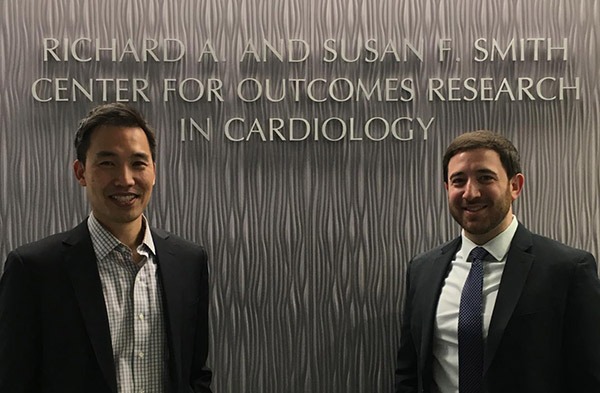
A study of nearly 62,000 hospitalisations nationwide in the USA has found that more than one in six patients with peripheral arterial disease (PAD) who undergo revascularisation procedures to restore blood flow to blocked leg arteries and other arteries outside of the heart are readmitted to the hospital within 30 days.
Led by researchers in the Smith Center for Outcomes Research in Cardiology at Beth Israel Deaconess Medical Center (BIDMC; Boston, USA), the large-scale analysis determined that 30% of readmissions following peripheral revascularisation were related to complications associated with the procedure, while differences in hospital quality accounted only modestly for readmission risk.
The findings, which were published in the Annals of Internal Medicine on 5 December, suggest that strategies to help prevent readmissions should focus on high-risk patients with PAD, including those who live with other serious health conditions, such as diabetes. Interventions related to post-procedure care might halt the need for readmission, such as early clinic follow-up and post-discharge nursing.
Revascularisation procedures – including surgical bypass operations and endovascular procedures in which balloons and stents are placed in the arteries with catheters to open blockages – can significantly improve patients’ quality of life and disease outcomes. However, limited data from earlier research of older Medicare patients have suggested that, like patients who undergo coronary bypass surgery, patients with PAD who undergo lower extremity bypass surgery are at high risk for readmission.
“With this new study, our aim was to determine the burden of nationwide readmissions following both endovascular and surgical revascularisation procedures for patients with PAD,” said first author Eric A Secemsky, an investigator at the Smith Center at BIDMC and a vascular medicine and intervention fellow at Massachusetts General Hospital. “We also wanted to identify potential causes of readmissions, both at the patient and institutional level, in order to identify areas for intervention and prevention.”
“In recent years, there has been an increased focus on preventing hospital readmissions as a way to improve health care quality and decrease costs,” explained Robert Yeh, the study’s senior author, director of the Smith Center for Outcomes Research in Cardiology at BIDMC and associate professor of Medicine at Harvard Medical School. As part of the federal healthcare reform, The Centers for Medicare & Medicaid Services’ (CMS) Hospital Readmissions Reduction Program (HRRP) financially penalises hospitals for higher-than-expected readmissions for key conditions. “In this new work focused on patients with PAD, we confirmed that not only are readmissions expensive, averaging US$11,000 per patient, but they also leave patients at risk for the development of further complications and potential setbacks to their recovery.”
The authors used the Nationwide Readmissions Database, which includes data from 22 states and represents nearly 50% of all US hospitalisations. Patients with public and private insurance, as well as patients who self-pay, are represented in the database.
“We found that in 2014, there were 61,961 hospitalisations during which a patient with PAD underwent a peripheral revascularisation procedure to treat their condition and were later discharged,” said Secemsky. “We were surprised to find that the 30-day hospital readmission rate was 17.6%, meaning that more than one in six PAD patients – whether they underwent bypass surgery or endovascular intervention – had to return to the hospital following their procedure.”
Further analysis showed that nearly 30% of patients were readmitted due to procedural complications. “Some sort of issue related to the procedure, maybe a related infection or problem with a stent, was causing patients to have to return to the hospital,” said Secemsky. In addition, approximately 8% of patients developed sepsis, a bacterial infection of the bloodstream, and 7.5% of patients were readmitted as a result of complications related to diabetes, a common problem among patients with PAD.
 The authors went on to assess whether differences in hospital quality contributed to variations in readmissions risk for patients with PAD. “Using data from the 1,085 hospitals included in this data set, we created a new analytic model to examine readmission rates between institutions that took into account differences in patient populations,” explained Secemsky. These results found that differences in hospital quality accounted only modestly for readmission risk, suggesting that penalising hospitals with greater than expected readmission rates may not be the only effective approach at reducing readmissions.
The authors went on to assess whether differences in hospital quality contributed to variations in readmissions risk for patients with PAD. “Using data from the 1,085 hospitals included in this data set, we created a new analytic model to examine readmission rates between institutions that took into account differences in patient populations,” explained Secemsky. These results found that differences in hospital quality accounted only modestly for readmission risk, suggesting that penalising hospitals with greater than expected readmission rates may not be the only effective approach at reducing readmissions.
“Moving forward, as clinicians and researchers, we need to recognise the special needs of the PAD patient population,” added Yeh. “If we can find ways to identify patients at highest risk of readmissions, we can implement practices or develop programmes to help them better manage their condition outside the hospital and avoid the need for readmission.”
This research was supported by the Smith Center for Outcomes Research in Cardiology at Beth Israel Deaconess Medical Center.











